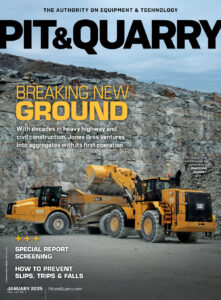New construction starts in May advanced 5 percent from April, according to McGraw Hill Construction. Much of the upward lift came from nonresidential building, which registered moderate growth for the second straight month after a sluggish performance at the outset of 2013.
Smaller gains in May were reported for housing and nonbuilding construction. Total construction starts on an unadjusted basis were reported at $187.6 billion during the first five months of the year – down 3 percent from the same period a year ago.
May’s data raised the Dodge Index to 105, up from the 100 that was reported for April and slightly above the average 101-index reading for all of 2012.
“The construction industry has shown modest improvement over the past year, helped by some project types while restrained by others,” says Robert A. Murray, vice president of economic affairs for McGraw Hill Construction. “The housing sector played a leading role last year in lifting overall construction activity, and while this year’s month-to-month gains have been smaller, housing continues to lead the hesitant construction expansion.
“Nonresidential building has yet to provide much of a contribution, as tenuous gains for commercial building have been offset by further weakness for institutional building. Still, the April and May pickup for nonresidential building could be a sign of more growth to come. ”
Nonresidential building specifically grew 9 percent in May to $156.4 billion following a 6 percent rise in April. For the commercial categories, stores and shopping centers are gathering momentum, with a 16 percent increase reported for May.
Institutional categories in May showed a mixed pattern. Educational facilities rebounded 10 percent after a weak April, helped by such projects as the $250 million expansion of the San Francisco Museum of Modern Art. The public buildings category in May climbed 95 percent, from a depressed April, supported by the start of a $125 million detention facility in Redwood City, Calif.
Residential building, at $206.8 billion, advanced 3 percent in May. Single-family housing, which had shown signs of leveling off in the prior two months, edged up 2 percent in May.
Also, nonbuilding construction increased 2 percent for the month to $132.4 billion. Supporting the gain was a 44-percent jump for electric utilities from a lackluster April, although the May amount for electric utilities was still down 24 percent from the average monthly pace during 2012.
Residential building in the first five months of 2013 advanced 32 percent compared to last year.










